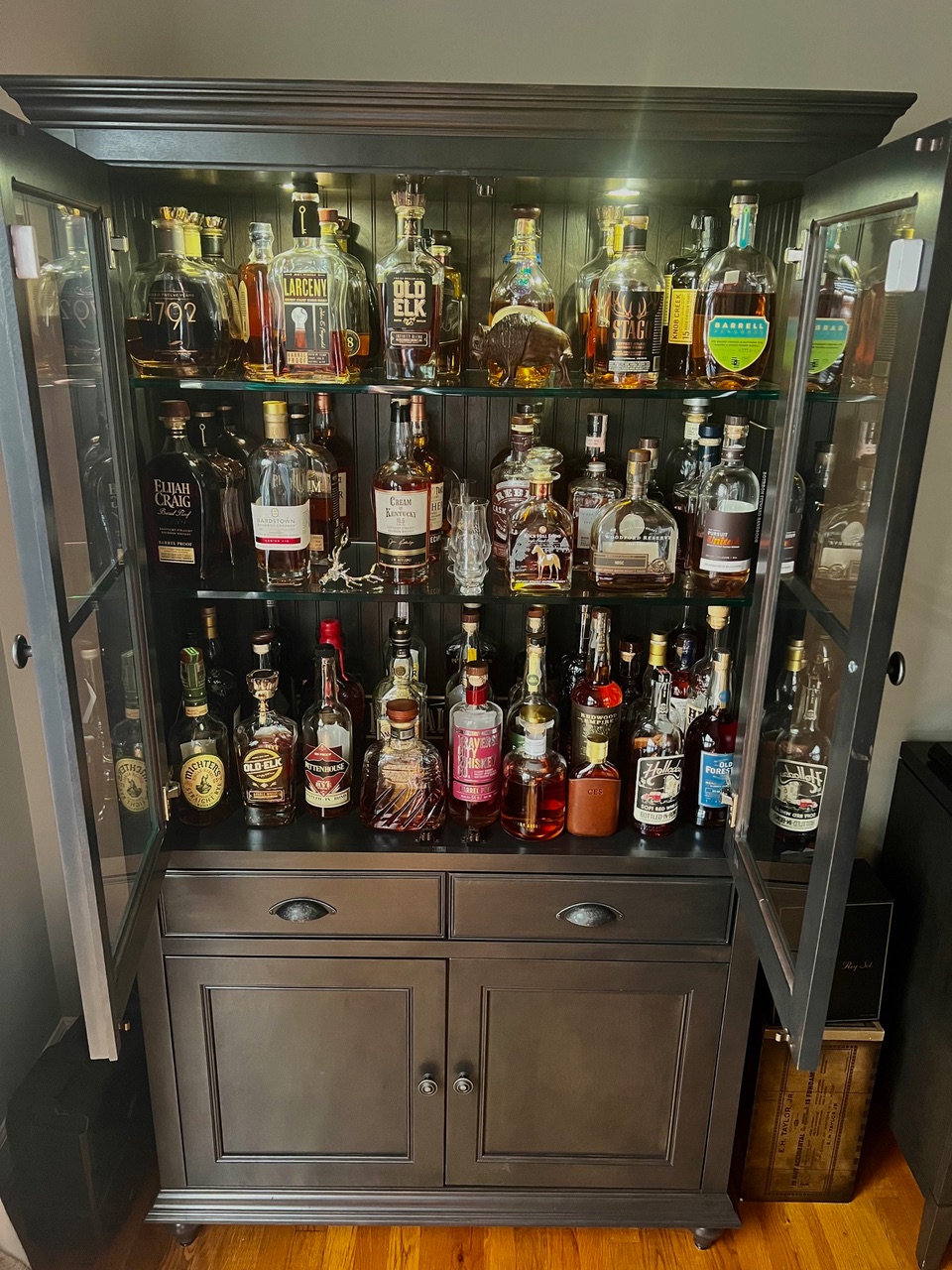Best Practices for Storing Whiskey and Bourbon Bottles

Think of whiskey and bourbon as more than just beverages; they are experiences in a bottle. Whether you’re a casual drinker, or a collector, properly storing your bottles ensures that every pour is as good as the first. Unlike wine, whiskey and bourbon do not age once bottled, but their quality can still degrade if not stored properly. Here’s a guide to the best practices for preserving your whiskey and bourbon at their peak.
1. Store Upright
Unlike wine, whiskey and bourbon should always be stored upright. Whiskey has a higher alcohol content, and when stored horizontally, the liquid can come into prolonged contact with the cork, potentially causing it to degrade. A disintegrating cork may lead to unpleasant flavors or cause the whiskey to spoil. Keeping bottles upright also prevents the cork from drying out since small amounts of humidity from the liquid will help maintain its integrity.
2. Keep Away from Direct Sunlight
Sunlight is the #1 enemy of whiskey and bourbon. UV rays can cause chemical reactions within the whiskey, leading to unpleasant flavors and color fading. Direct sunlight can also cause the temperature inside the bottle to fluctuate, potentially leading to expansion or evaporation. To avoid this, store your bottles in a cool, dark place—such as a cabinet or a specially designed bar shelf that shields from direct light.
3. Stable Temperatures are Key
Extreme heat or cold can significantly alter the quality of your whiskey and bourbon. High temperatures can lead to evaporation, causing a loss of both liquid and flavor. On the other hand, storing bottles in a place that’s too cold can cause the whiskey to become cloudy or sluggish. A cool room with a temperature range of 15-20°C (59-68°F) is ideal for long-term storage. It’s also important to avoid temperature fluctuations, so storing bottles away from windows, radiators, or vents is essential. Do not store in your freezer. This is not vodka!
4. Humidity Control
While whiskey and bourbon don’t need to be stored in as controlled an environment as wine, moderate humidity is beneficial. If the air is too dry, corks may dry out and crack, potentially letting air into the bottle. A relative humidity level of around 50-70% is considered optimal. If you live in a particularly dry or humid climate, consider investing in a humidity-controlled cabinet or room.
5. Minimize Oxygen Exposure
Once opened, whiskey and bourbon are at risk of oxidation, which can alter their taste over time. The more air inside the bottle, the faster the whiskey will oxidize. For bottles you plan to keep open for an extended period, consider decanting into smaller bottles to reduce the air-to-liquid ratio. Properly sealing the bottle after every pour is also crucial to limit oxygen exposure.
6. Avoid Strong Smells
Strong odors from nearby items, such as cleaning supplies or chemicals, can seep into a whiskey bottle, especially if the cork is porous or not properly sealed. Always store your whiskey away from items with strong odors and ensure the storage area is free from any scents that could alter the whiskey’s aroma and flavor profile.
7. Invest in a Whiskey Cabinet
For those serious about their collection, investing in a whiskey or bourbon cabinet is a wise choice. Many of these cabinets are designed to maintain consistent temperature and humidity levels while protecting your bottles from light. Plus, they make for an aesthetically pleasing way to display your collection. Make sure your glass shelves are thick enough to support multiple bottles. Your local glass shop can custom cut thicker shelves at a reasonable price.
8. Handle with Care
Handling your bottles carefully is equally important. Constant movement or vibration can disrupt the whiskey and affect the integrity of the liquid. Whether you’re displaying your bottles or just organizing them, ensure they’re stored on a stable surface.
9. Keep Track of Opened Bottles
Whiskey and bourbon don’t spoil quickly after being opened, but their flavors can change over time due to oxidation. It’s a good idea to consume opened bottles within six months to two years, depending on how much air is in the bottle. Keeping track of when you open bottles and prioritizing consumption of older ones will ensure you enjoy them at their best.
Proper storage of whiskey and bourbon ensures that each glass delivers the flavors and aromas that the distiller intended. By following these best practices, you can enjoy your collection for years to come, preserving both the liquid and its investment value. Whether it’s a special bottle from Jack Daniel’s latest release or a rare vintage, the way you store your whiskey matters just as much as how you drink it.

Leave a Reply
Become an insider and receive weekly advice, tips, and insight on all things whiskey
.
Weekly tips, reviews and recommendations to help you enjoy whiskey life to the fullest.
JOIN THE LIST
Sippin' With Jordan Davis
sippin' with the stars
Million Dollar Cowboy Bar WY
old fashioned aF
5 Steps To Sip and Savor Whiskey
whiskey 101
COMMENTS